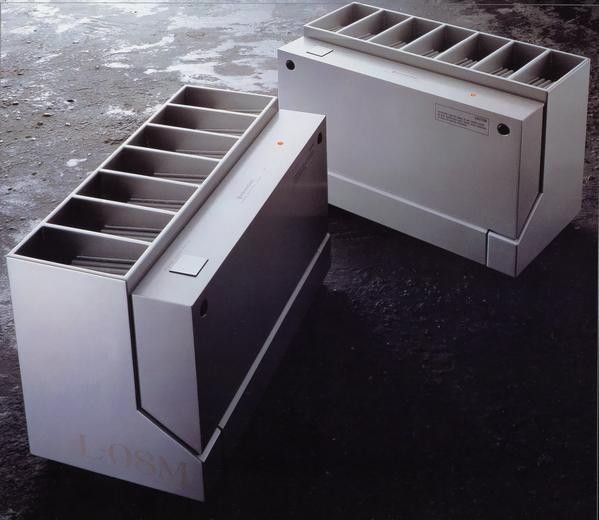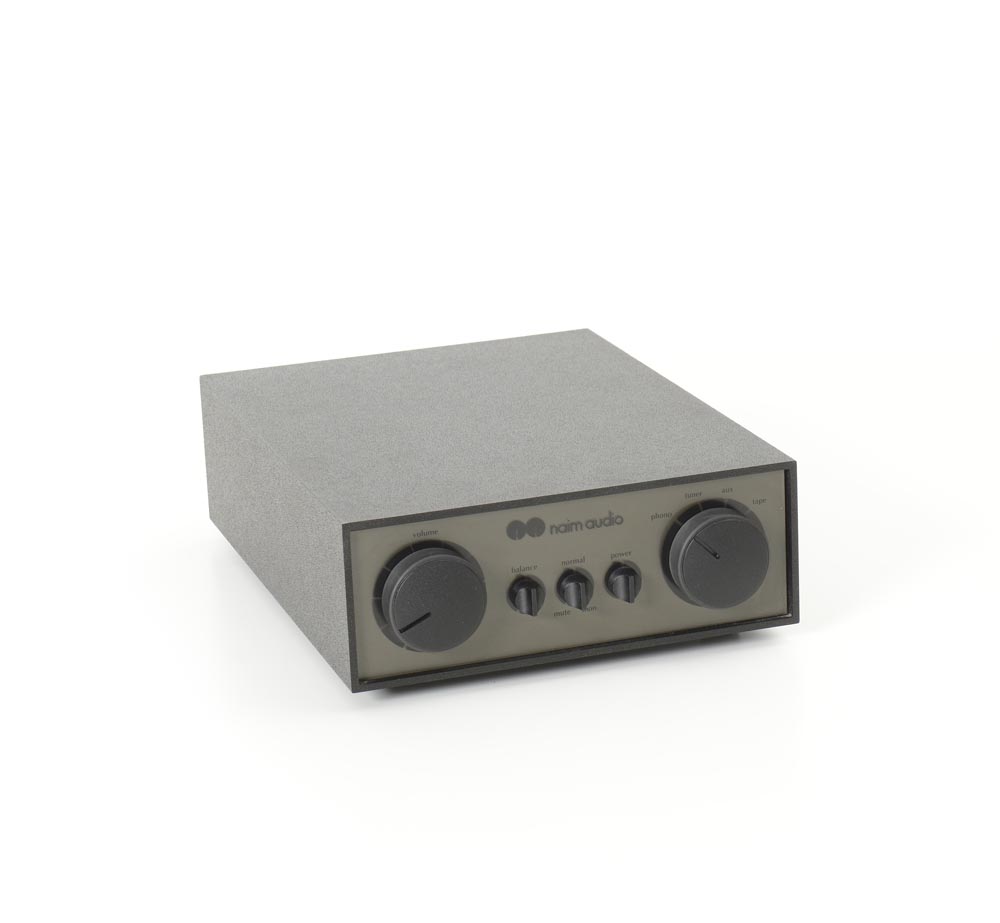You are using an out of date browser. It may not display this or other websites correctly.
You should upgrade or use an alternative browser.
You should upgrade or use an alternative browser.
Name a 'beautiful' amplifier.
- Thread starter Rockmeister
- Start date
Kenwood L-08M
I love those. Remind me a bit of brutalist architecture.
They would be at home in the terrifying AT&T 'Long Lines' building (old phone exchange) in Manhattan.

Last edited:
You've got it in one. If you are selling polyester comfort slacks with elasticated waistband, then provided you have beige, Lovat green, and blue covered, you're good enough.I guess it may be possible that the designers know that most blokes actually like ‘biscuit tin and lights’ designs and are just playing to that market? Nah, I know.
Jim Audiomisc
pfm Member
I guess it may be possible that the designers know that most blokes actually like ‘biscuit tin and lights’ designs and are just playing to that market? Nah, I know. Well then I think we have stumbled on the fact that a Designer never saw the product at all. Engineers yes but designers?
For the 500 range onwards Armstrong employed industrial designers. This was prompted by the 400 range being a bit of a disaster. The firm thought it looked OK. But lots of the potential buyers decided it looked awful. So sales dragged. They got in a rated designer and the same innards were used for the 500 range. Which sold like hotcakes and won a Design Council tag! Message learned from then on. Hence the 600 avoided the 'biscuit tin' appearance and had a nice style that also sold well.
Only snag was that it was a booger to assemble as a result. 8-]
The circuits were the easy bit. Getting things to fit together was harder. Largely because most physical components maker that provided things like the wood sleeve, plastic under-tray, etc, weren't initially able to make the items with the required physical precision. Fortunately they eventually were pushed into learning. But it was another episode that explains why over the following decades Japanese kit *and components* trounced UK makers. Result being most 'UK' HiFi was from then on made mostly using Japanese or other non-UK components. :-/
John Phillips
pfm Member
I have a non-audio example where the circuits were emphatically not the easy bit.For the 500 range onwards Armstrong employed industrial designers. This was prompted by the 400 range being a bit of a disaster. The firm thought it looked OK. But lots of the potential buyers decided it looked awful. So sales dragged. They got in a rated designer and the same innards were used for the 500 range. Which sold like hotcakes and won a Design Council tag! Message learned from then on. Hence the 600 avoided the 'biscuit tin' appearance and had a nice style that also sold well.
Only snag was that it was a booger to assemble as a result. 8-]
The circuits were the easy bit. Getting things to fit together was harder. ...
I watched the engineers working in the same lab where I did shifting heaven and earth with previously untested technology to miniaturise a very complex piece of kit. But its Design Council Award for excellence in design was actually given to the person who designed the case to put around their hard-won result. That didn't seem quite fair.
But in the context of this thread, external appearance, whether beautiful, striking, purposeful or way-over-the-top does sell the product to whomever finds it pleasing.
Sinclair Neoteric 60: http://ukhhsoc.torrens.org/makers/Sinclair/Leaflets/Neoteric/Front.jpeg.
Electronluv anyone? http://www.electronluv.com/
Electronluv anyone? http://www.electronluv.com/
Beobloke
pfm Member
This is clearly the right answer. I’m amazed it took 10 pages to get there...
Gervais Cote
Predator
Nice toaster but where do you insert the slice of bread ?Kenwood L-08M
Except lots of iconic designs don't follow function. An Alessi lemon squeezer is useless, juice everywhere. Rietveld chair, looks great, but sitting on a plank. Rover chair, not bad to sit on but try moving one. The one with leather strips on chrome, bloody awful to st on. So not necessarily.There seem to be three schools of audio design; a) don’t try at all (lazy black boxes with no discernible aesthetic design or ergonomics), b) get it right, which is anything from vintage Braun, Quad, Lescon, B&O, Meridian, silver-face Pioneer, Marantz, chrome-bumper Naim etc, and c) try way, way too hard and fail catastrophically, e.g. all the hideous oligarch bling-fi Daytona600 is posting. Some of it looks like the design team was Donald Trump and Homer Simpson FFS!
As ever good design tends to be form dictated by function and ergonomics. That has never changed and just because it is incredibly easy to CNC bizarre shapes does not make it a good idea! The best audio design is a real asset to any room and timeless IMO, e.g. you could put say a Pioneer SX980 or a Quad 34/306 in any room decor and they would look great IMO. Same with a lot of proper vintage valve power amps (Leak, Quad, McIntosh etc) as they are beautifully executed form dictated by function design.
Rockmeister
pfm Member
I like the daft stuff, and i like mess...reminds me of one year at the Wigwam show where the boys thought this lot up...
 domestic harmony by John Dutfield, on Flickr
domestic harmony by John Dutfield, on Flickr
I'd not quite say 'beautiful' but I certainly was influenced by its looks as much as its sound when I bought it.
 main by John Dutfield, on Flickr
main by John Dutfield, on Flickr
 domestic harmony by John Dutfield, on Flickr
domestic harmony by John Dutfield, on FlickrI'd not quite say 'beautiful' but I certainly was influenced by its looks as much as its sound when I bought it.
 main by John Dutfield, on Flickr
main by John Dutfield, on FlickrJim Audiomisc
pfm Member
Sinclair Neoteric 60: http://ukhhsoc.torrens.org/makers/Sinclair/Leaflets/Neoteric/Front.jpeg.
Electronluv anyone? http://www.electronluv.com/
The problem with the Neoteric was when you *didn't* want all the controls top-dead-center. Then looked a mess. It was also even shorter on heatsinks than the 600 amp! 8-]
Yank
Bulbous Also Tapered
You lost me with the "kneel at the analogue altar" placement of the turntable.
radamel
Music Fiend
I like the daft stuff, and i like mess...reminds me of one year at the Wigwam show where the boys thought this lot up...
domestic harmony by John Dutfield, on Flickr
That almost looks like a contemporary art installation. It certainly makes me feel a little uneasy.
I like the daft stuff, and i like mess...reminds me of one year at the Wigwam show where the boys thought this lot up...
domestic harmony by John Dutfield, on Flickr
I'd not quite say 'beautiful' but I certainly was influenced by its looks as much as its sound when I bought it.
main by John Dutfield, on Flickr
chartz
If it’s broke fix it!
Also in my collection. Sounds great too.
Rockmeister
pfm Member
My fave bit was (And why I went around to the back) Seeing the subtle use of some power blocks as cable lifters. I had no doubt that without them the system would’ve sounded crap.
John_73
pfm Member
And lastly from the "I want it now..." files, just for @Beobloke. The added double rug action...
Nice! Was momentarily tempted too...
https://www.ebay.co.uk/itm/Bang-Olu...d=link&campid=5338728743&toolid=20001&mkevt=1
This site contains affiliate links for which pink fish media may be compensated.



